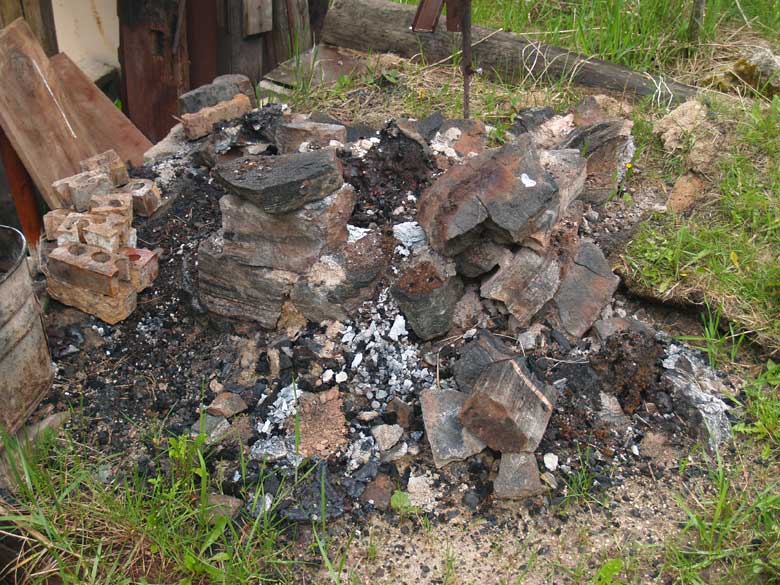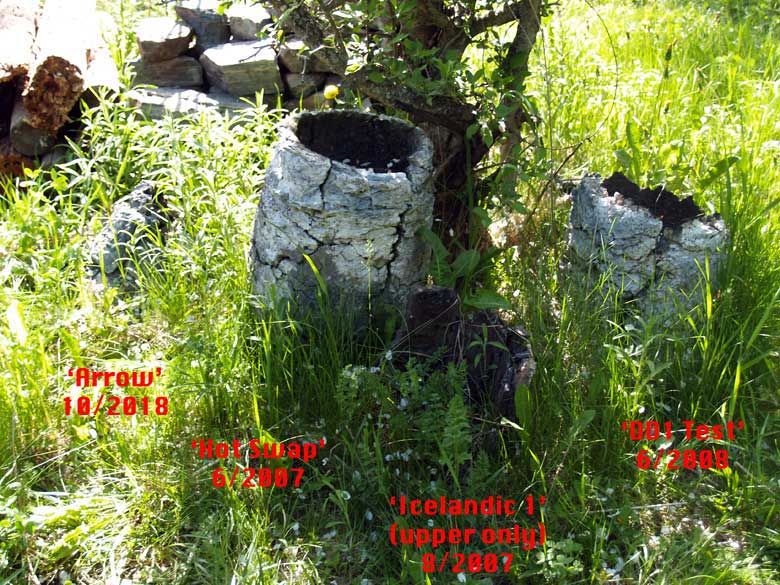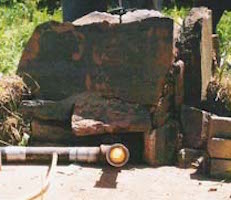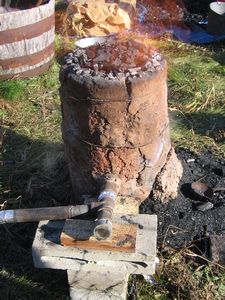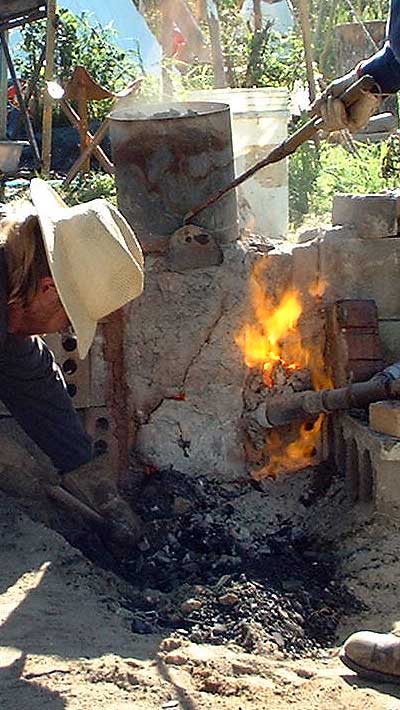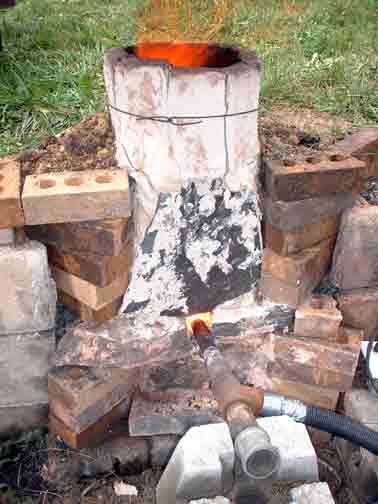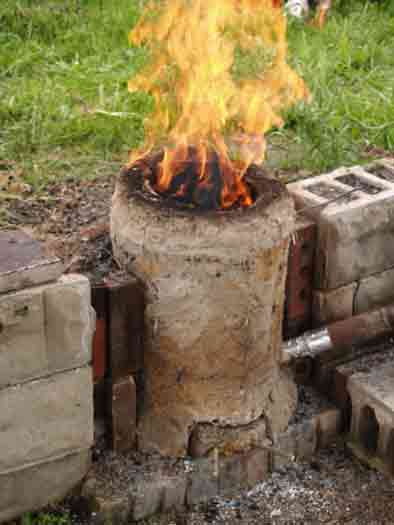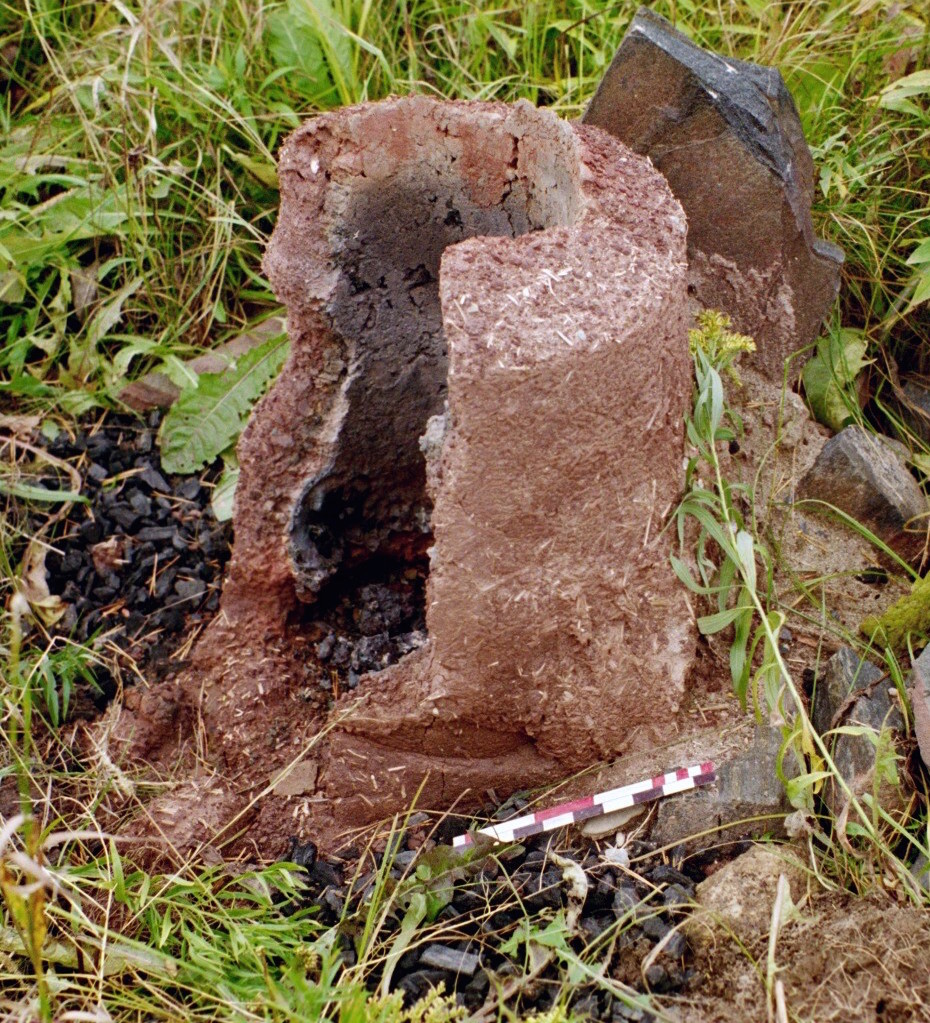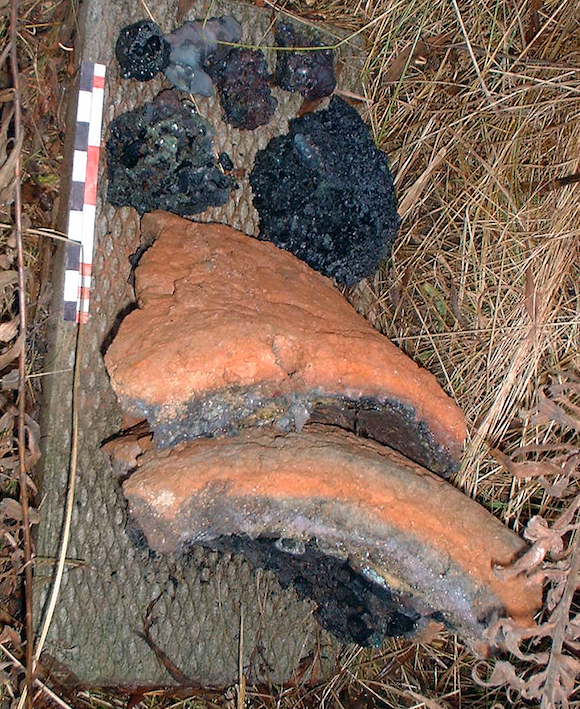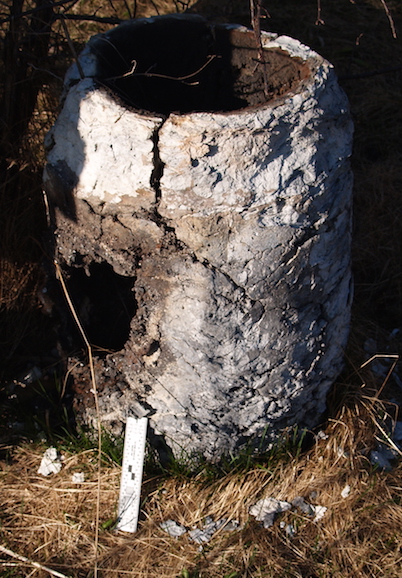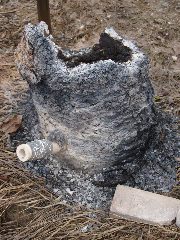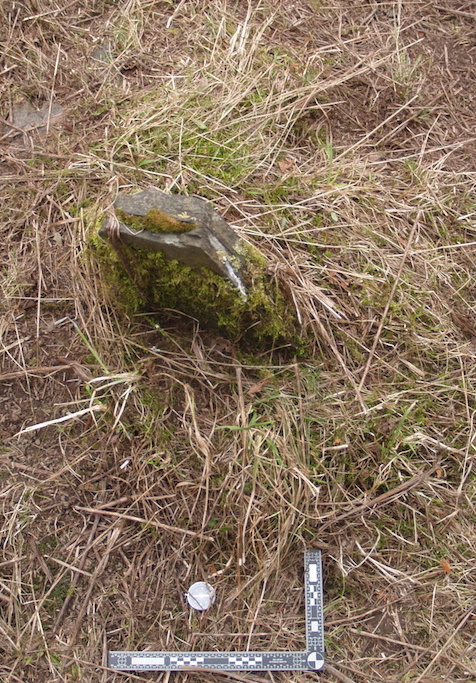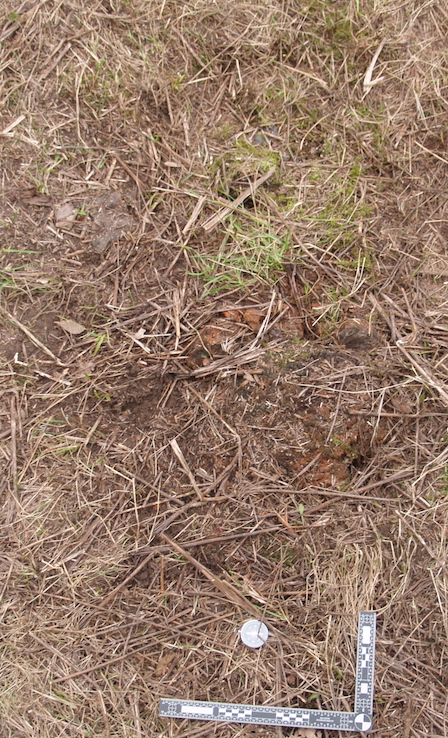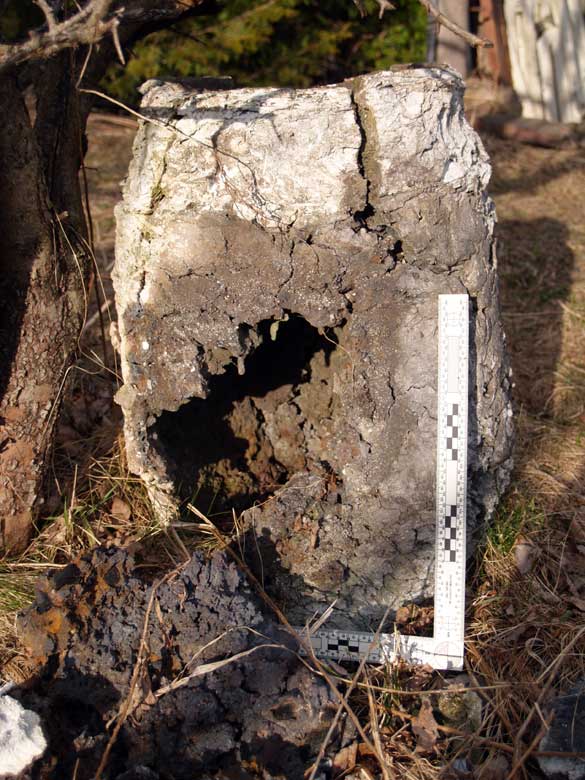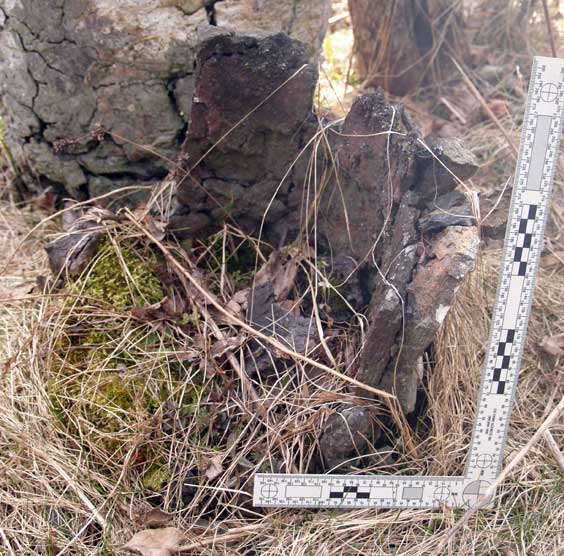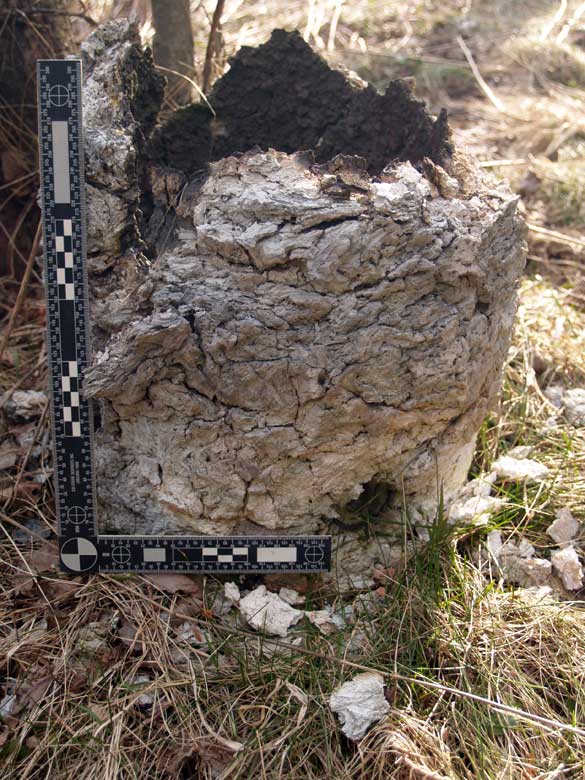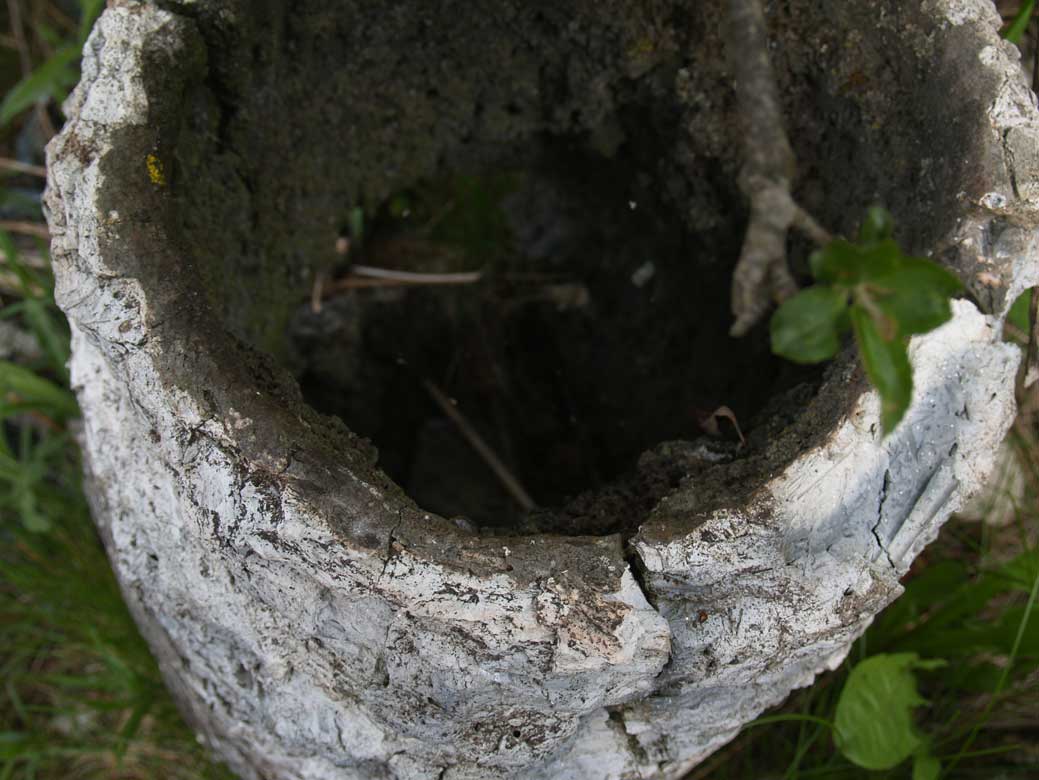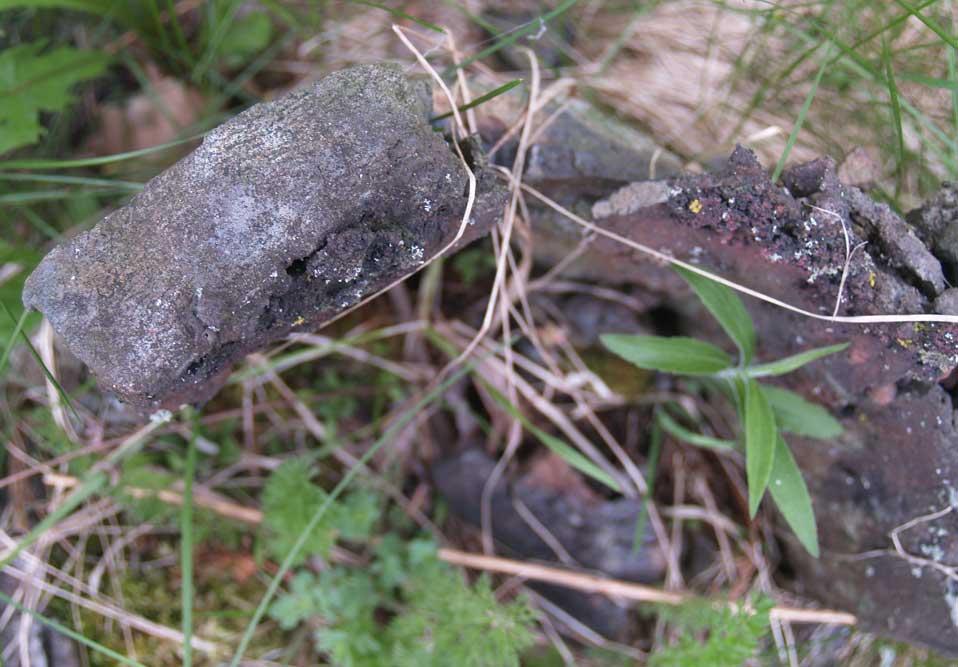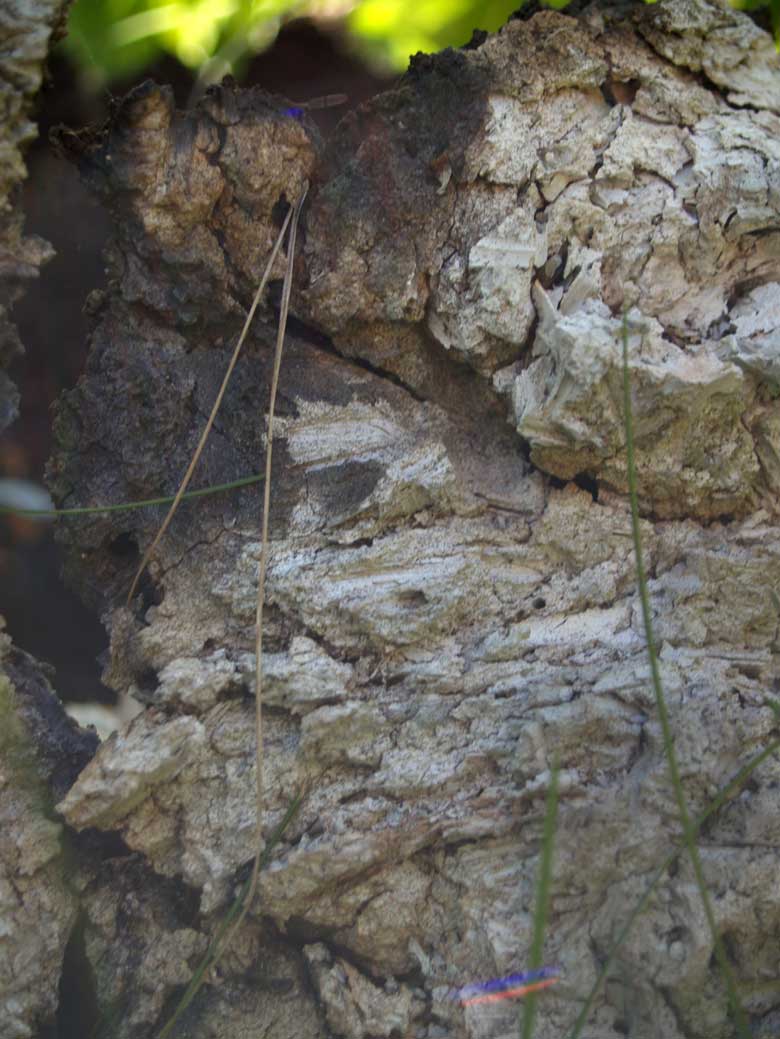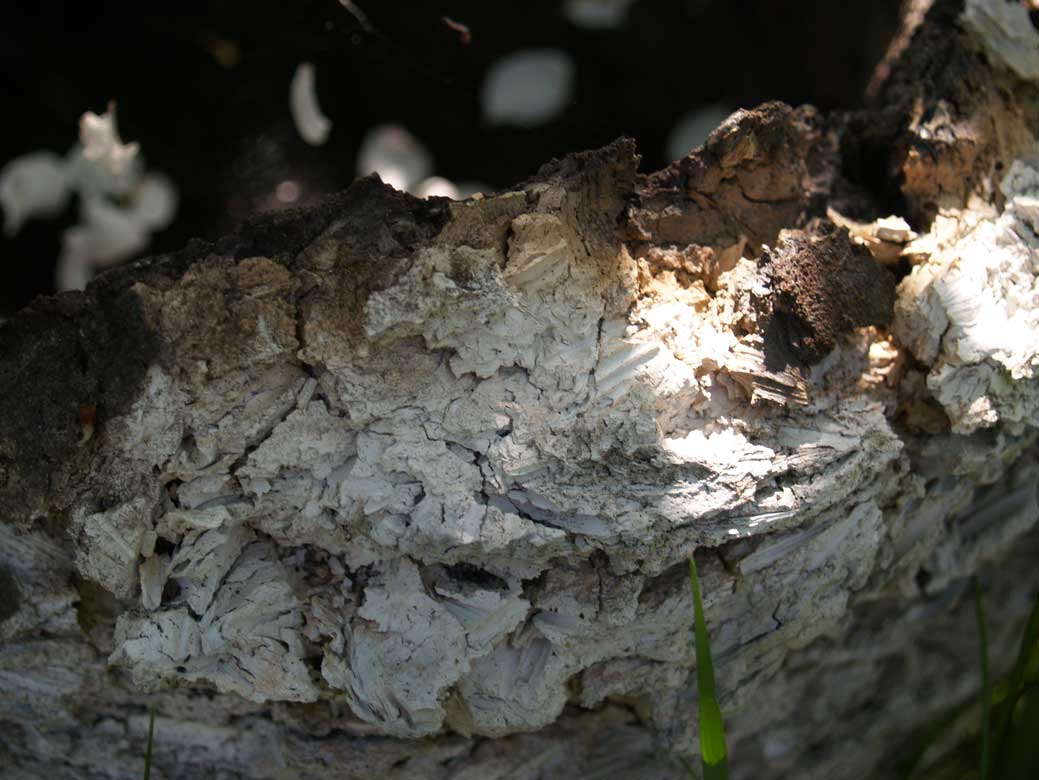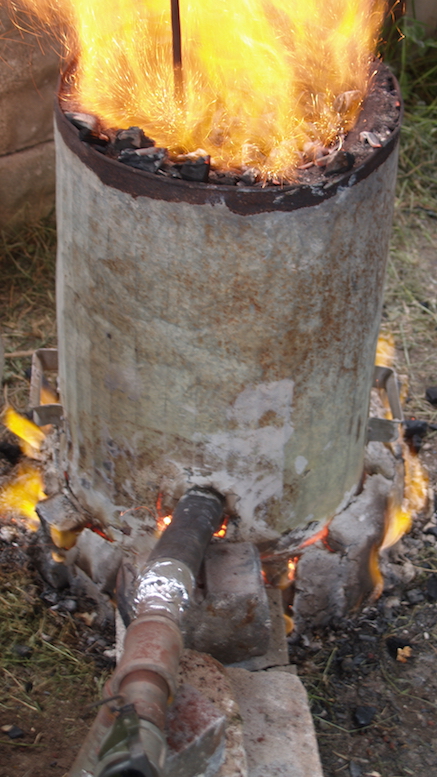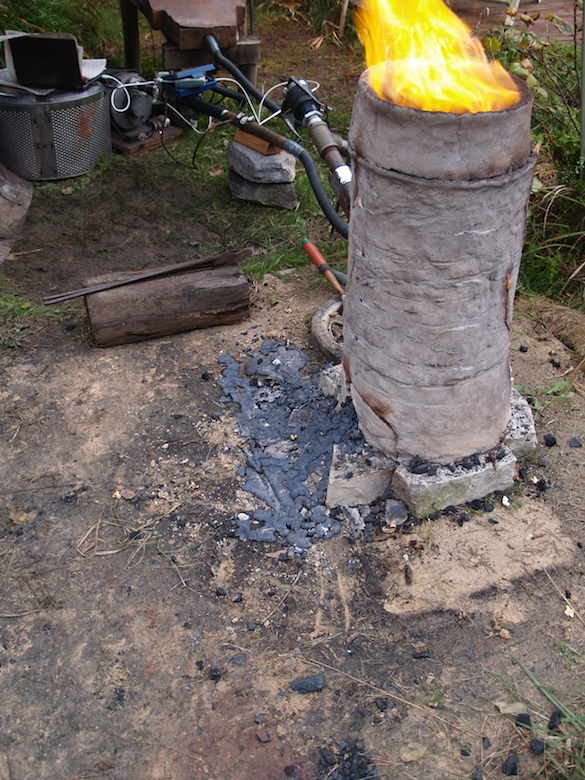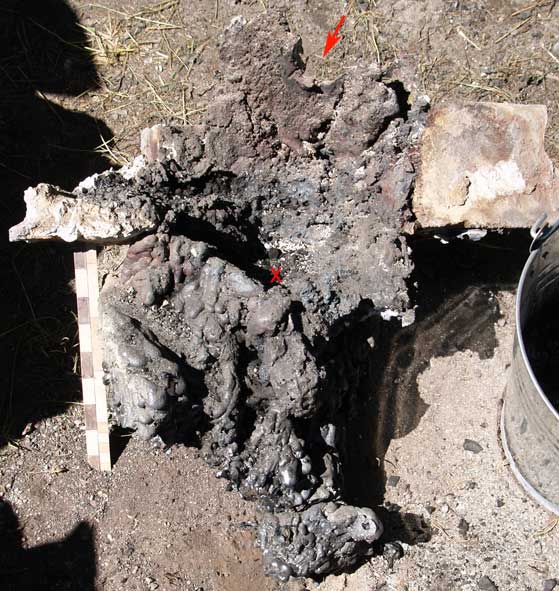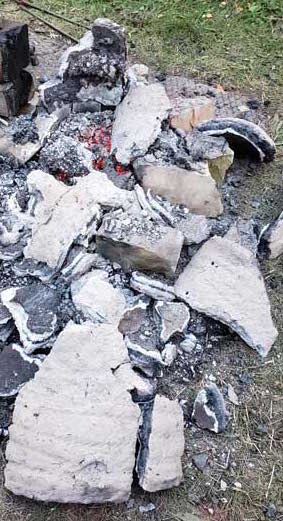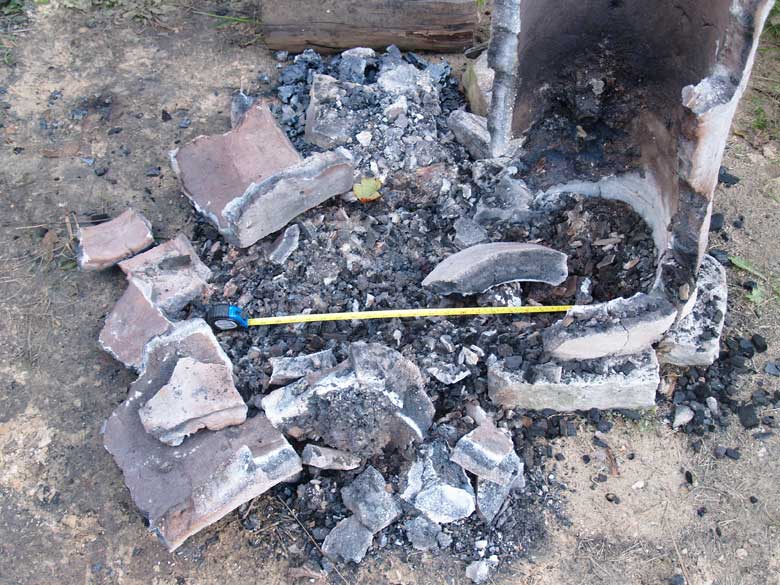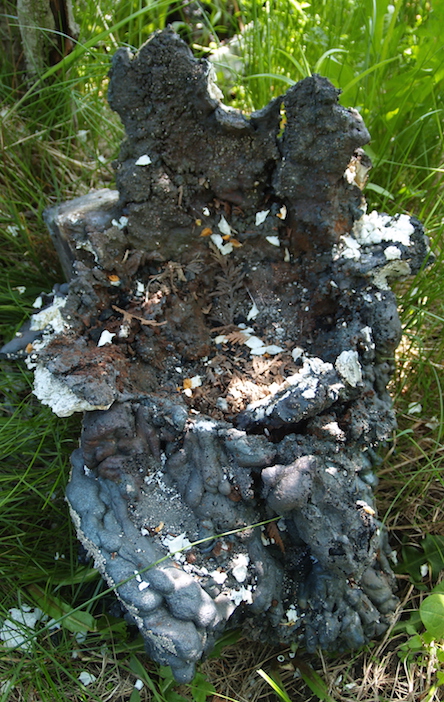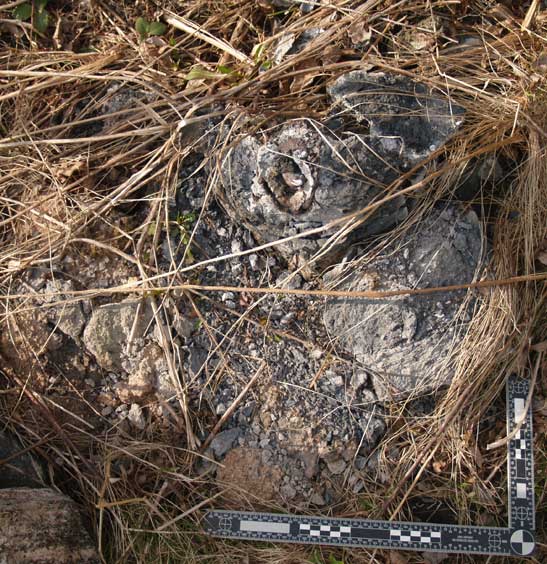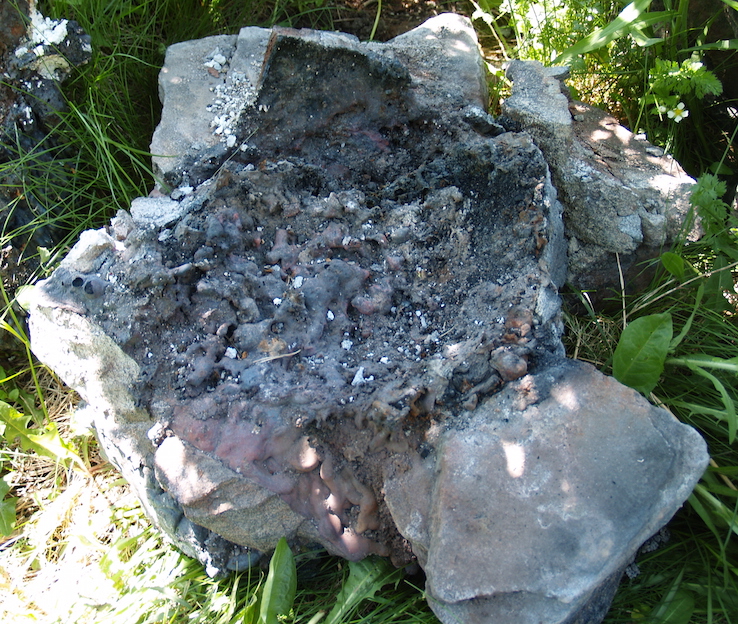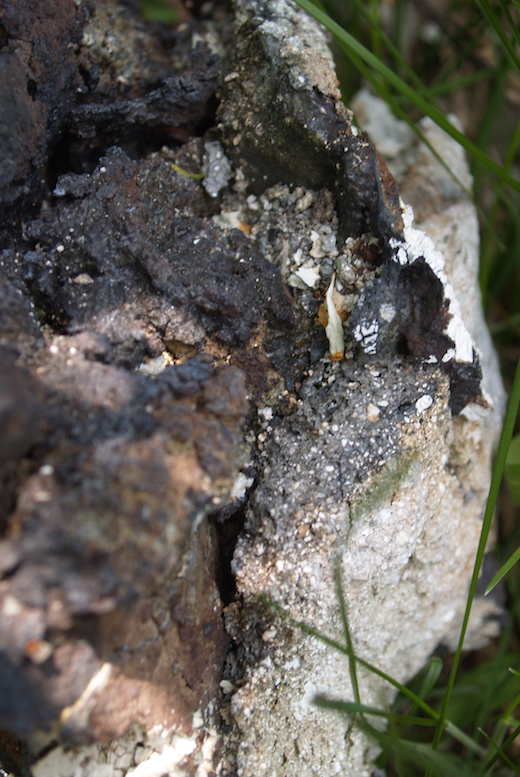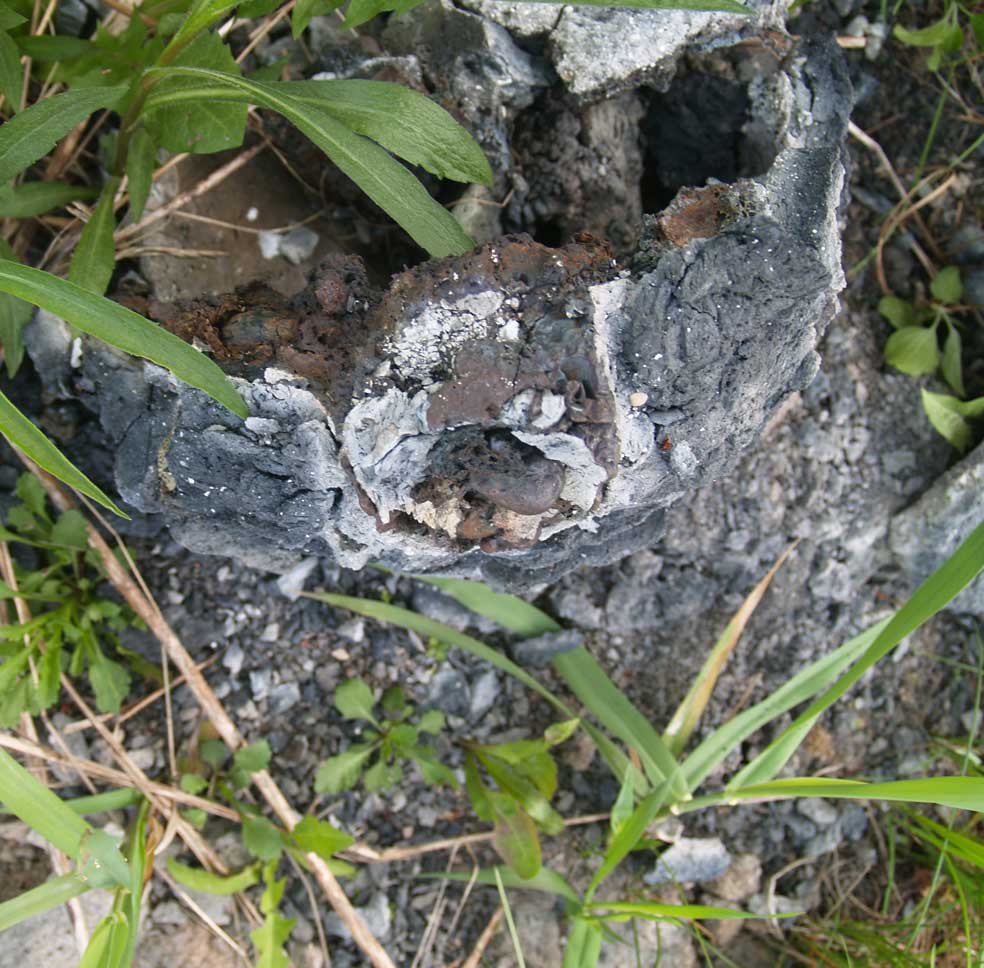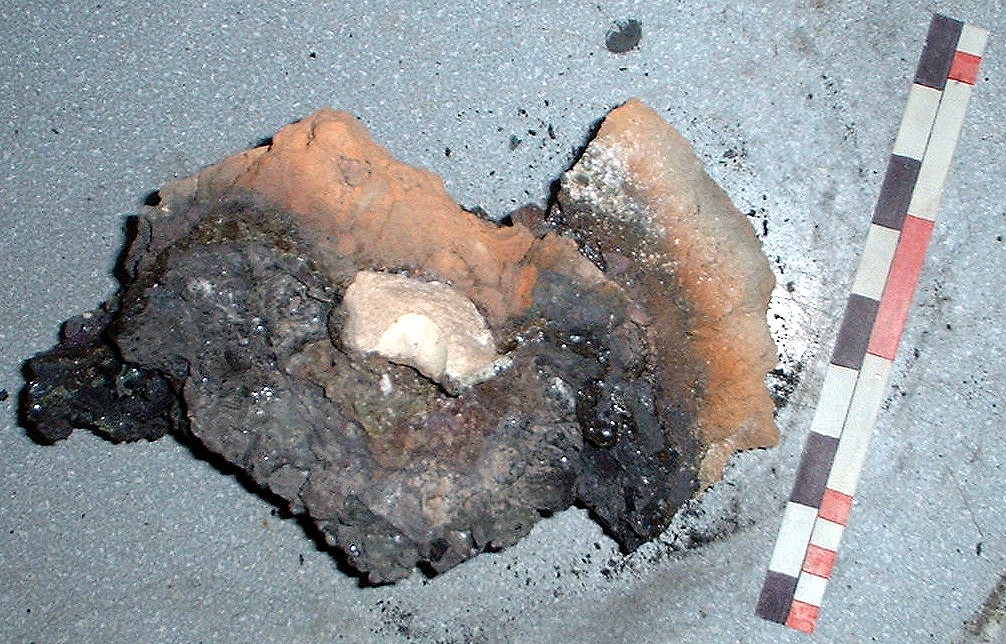In most cases, all that can be expected to be recovered, after hundreds (if not thousands) of years, will be the vary base level of the furnace, basically the slag bowl below tuyere level, with perhaps the base level wall section that surrounded that. Usually there is no sign of the tuyere, or any indication of how it might have been mounted. If the walls had been constructed some clay mixture, there may be some indication by way of that inner part of the walls that had reached high enough temperatures to sinter into a ceramic. The action of rain has simply washed away any raw clay that composed the outer section of the original walls. Even the sintered portions are sure to have been subjected to years of alternating freeze and thaw cycles, further fragmenting even these remains.
Right : A series of images showing the stages of excavation of one of the furnaces at Skogar, Iceland. This furnace, showing only about the bottom 30 cm of height recovered and its clear lower base construction of stacked stones, served as the conceptual prototype for the experimental furnace seen below. (1)
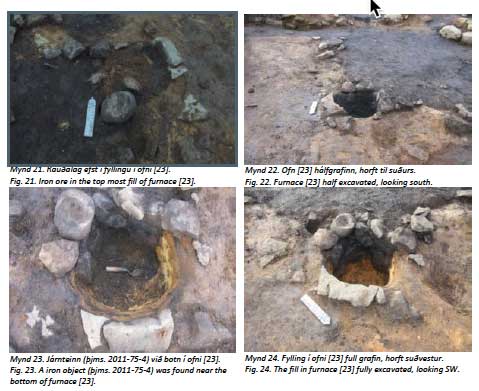
Image taken from : St.
Sigur∂arson, G., & Zoëga, G., 2013,
'Skógar í Fnjóskadal - Fornleifarannsókn 2011-2012',
Bygg∂asafn Skagfir∂inga Rannsóknaskýrslur, 2013/140 :
page 29 (available
as a PDF)

